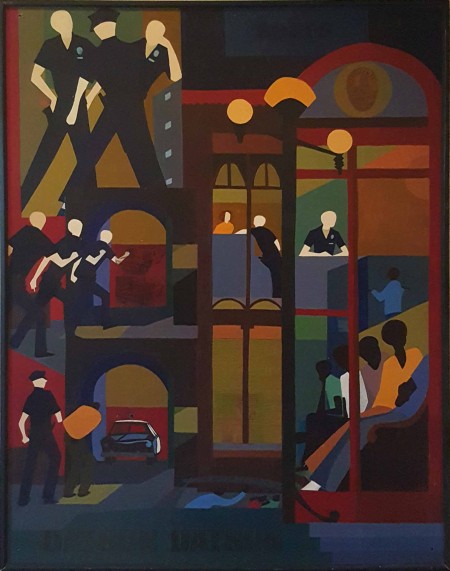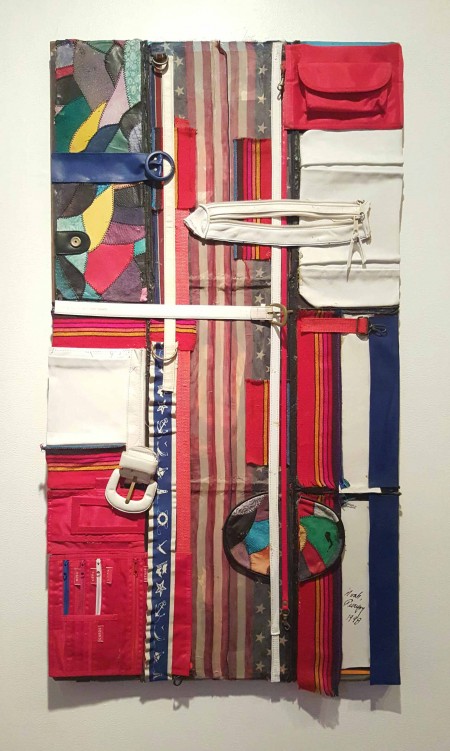In the summer of 1965, a young black man was pulled over by a white police officer for suspicion of driving while under the influence. The incident occurred on August 11 on the outskirts of Watts and brought with it an unsettling exchange. What initially began as a roadside argument quickly escalated into a fight, attracting the attention of a growing group of onlookers.
What ensued next was the largest urban rebellion of its kind during the Civil Rights era. For six days, riots raged within the commercial region of Watts, racking up more than 40 million dollars in damages. While 34 people were killed and more than 1,000 injured, the outrage that ran rampant throughout the city streets articulated the community’s longstanding discontentment with substandard living conditions, high unemployment rates, and inadequate public services.
In response to the defense industry’s recruitment efforts during the1940s, the black population in Los Angeles soared as an influx of African Americans migrated west with hopes for prosperity. While many jobs were available, housing quickly became a widespread issue since racially restricted covenants enacted during the 1920s excluded minorities from renting and buying property in areas that existed outside East and South Los Angeles, such as Compton and Watts.

Restricting the black population (along with Latinos and Asians) to marginalized regions comprising no more than a mere 5% of the city’s 500 square mile expanse did little to deter discrimination. Instead, it did just the opposite by increasing an already rising trend in segregation. While the California legislature eventually passed the Rumford Fair Housing Act in an attempt to remedy residential segregation in 1963, the California Real Estate Association was quick to retaliate by sponsoring an initiative to re-legalize discrimination by landlords and property owners. When this initiative, known as Proposition 14, passed with overwhelming support by the white majority, the black community was pushed to react after enduring more than their share of inequitable and discriminatory practices.
While the Watts Rebellion left the city in ruins, community leaders rallied together to reunite the community by inspiring an attitude of perseverance. Sam Rodia’s Watts Towers, a paramount work of folk art, constructed of steel and covered with mortar that the artist constructed single-handedly, became a symbol of healing. Residents and activists alike gathered together and the Watts Towers Community Arts Center became a place for local artists and youth to gather and explore art as alternative outlet for expression.
“Watts,” a new exhibition now on view at The Loft at Liz’s, offers an engaging sampling of works by those who took the initiative, worked together, and supported one another in the aftermath of the Riots.
Included among the eight artists featured in this show are works by Noah Purifoy and John Outterbridge. Both resided in South Los Angeles at the time of the Rebellion and had taken to the streets in its wake in search of burnt and defiled debris that they could use in their practice. Not only are the contributions that these artists made during such a tumultuous period in their city’s history considered pioneering, but their efforts are largely responsible for shaping the Black Assemblage Art Movement.
Also on view are works by John Riddle, Jr., whose intense yet playful paintings, silkscreens, and sculpture reflect various instances unique to the black American experience. Born and raised in Los Angeles, Riddle emerged as a figurative artist but was swayed to rethink art’s purpose after paying witness to the Riots firsthand.
Two pieces by Brockman Gallery co-founder, Dale Brockman Davis, also appear in this important show. A promoter of African-American artists in Los Angeles, Davis remains known for his assemblage sculpture that addresses various themes unique to African American culture such as jazz music. Improvised Jazz Instrument (2008) and Rails, Riffs, and Rhythms (2016) are both exemplary of such and showcase an innovative approach to assemblage.

A fairly large selection of Timothy Washington’s etchings on aluminum occupy the gallery’s enclave. Another native of South Los Angeles, Washington had the unique opportunity to study under Purifoy at Chouinard Art Institute. Love they Neighbor (1968) is perhaps his most impressive work to appear in this exhibition. Made from wood, metal, and hundreds if not thousands of nail heads, his alien-like female figure is yet another example of the level of ingenuity that emerged out of the Black Assemblage Art Movement.
The collection also includes two tempura and olive oil works on paper by David Hammons. Although Hammons wasn’t raised in Los Angeles, he moved from his hometown in Illinois to attend Choiunard in the late 1960s. While in art school, Hammons began working with a group of African-American artists and jazz musicians centered in South Los Angeles. Their influence had a profound impact upon the artist and proved formative to his practice, which has since reflected his commitment to the civil rights and Black Power movements.
Other contributing artists include Cynthia Janet White, Charles Dickson, and Michael Massenburg. Their work, along with the aforementioned, makes for a truly vibrant presentation of the city’s leading black artists whose experiences working together and in the face of adversity convey art’s power as both a beacon of hope and conduit for social change.
Curated by co-founder of the Black Arts Council, Stan Sanders, “Watts” will remain on view through February 15th at The Loft at Liz’s located at 453 S. La Brea Avenue in Los Angeles.
–Anise Stevens